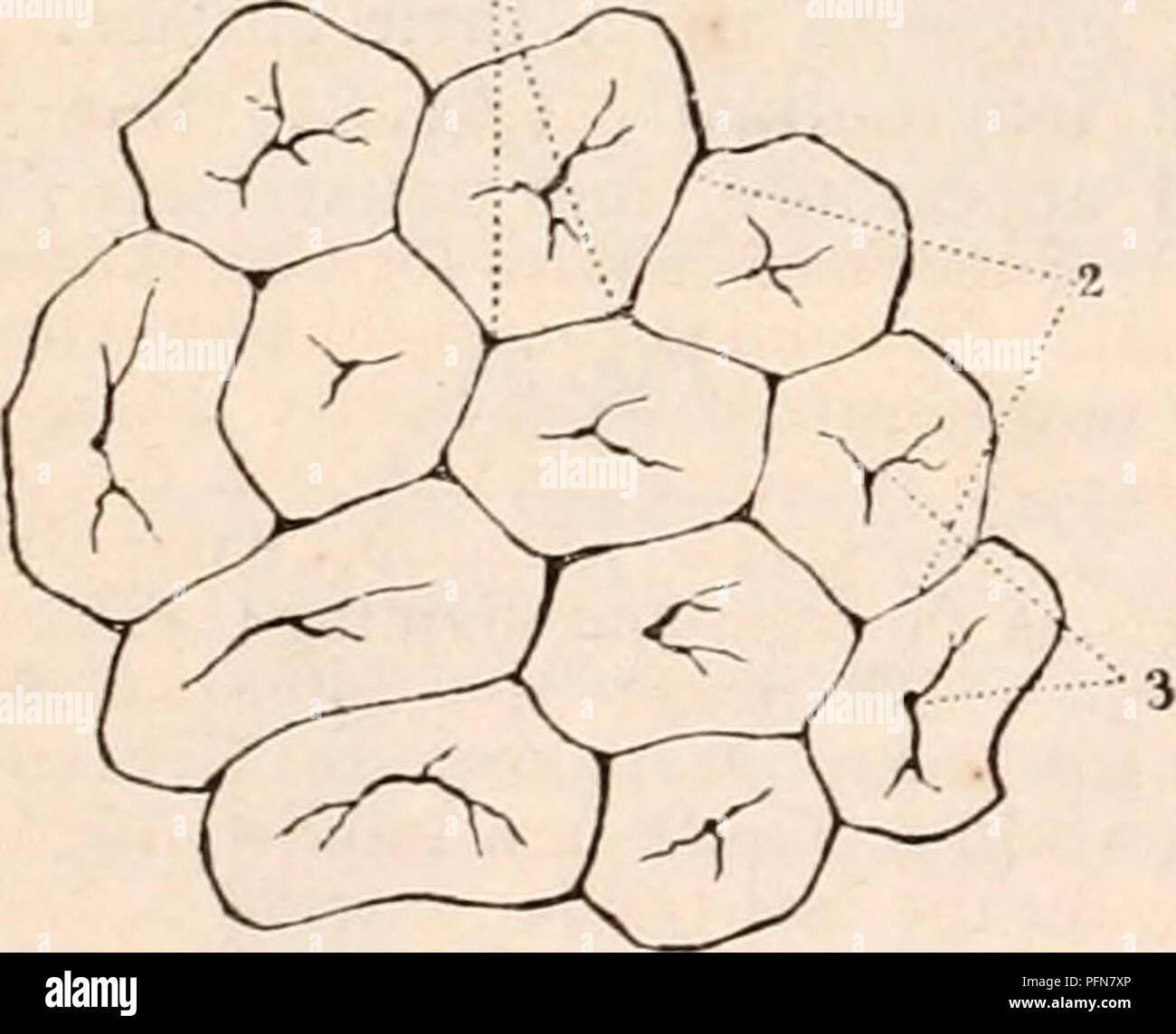. The cyclopædia of anatomy and physiology. Anatomy; Physiology; Zoology. 166 NORMAL ANATOMY OF THE LIVER. an irregularly pentagonal or hexagonal outline with sharp or rounded angles in proportion to the smaller or greater quantity of Glisson's capsule contained within the liver. Each lobule is divided upon its exterior into a base and a capsular surface. The base (Jig. 34, 4) corresponds with one extremity of the lobule, is flattened and rests upon an hepatic vein, which is thence named sub-tabular. The capsular surface (fig. 34, 3, 3) includes the rest of the periphery of the lobule, and has

Image details
Contributor:
Central Historic Books / Alamy Stock PhotoImage ID:
PFN7XPFile size:
7.1 MB (181.8 KB Compressed download)Releases:
Model - no | Property - noDo I need a release?Dimensions:
1756 x 1423 px | 29.7 x 24.1 cm | 11.7 x 9.5 inches | 150dpiMore information:
This image is a public domain image, which means either that copyright has expired in the image or the copyright holder has waived their copyright. Alamy charges you a fee for access to the high resolution copy of the image.
This image could have imperfections as it’s either historical or reportage.
. The cyclopædia of anatomy and physiology. Anatomy; Physiology; Zoology. 166 NORMAL ANATOMY OF THE LIVER. an irregularly pentagonal or hexagonal outline with sharp or rounded angles in proportion to the smaller or greater quantity of Glisson's capsule contained within the liver. Each lobule is divided upon its exterior into a base and a capsular surface. The base (Jig. 34, 4) corresponds with one extremity of the lobule, is flattened and rests upon an hepatic vein, which is thence named sub-tabular. The capsular surface (fig. 34, 3, 3) includes the rest of the periphery of the lobule, and has received its designation from being inclosed in a cellular capsule derived from the capsule of Glisson. In the centre of each lobule is a small vein, the intra-lobular (Jig. 34, 5, 6, Jig. 35, 3_) which is formed by the conver- gence of six or eight minute venules from the rounded processes situated upon the surface of the lobule. The intra-lobular vein thus con- stituted takes its course through the centre of the longitudinal axis of the lobule, pierces the middle of its base, and opens into the sub-lo- bular vein. The circumference of the lobule with the exception of its base, which is always closely attached to a sub-lobular vein, is con- nected by means of its cellular capsule with the capsular surfaces of surrounding lobules. The cellular interval between the lobules is the in- terlobular fissure (Jig. 34, 8, fig. 35, 2), and the angular interstices formed by the appo- sition of several lobules are the interlobular spaces (Jig. 34, 9, fig. 35, 1). Fig. 35.. Angular lobules in a state ofaneBtnia. From Kiernan's paper. No. 1, interlobular spaces, containing the larger interlobular branches of the portal vein, hepatic artery and duct ; 2, interlobular fissures ; 3, intra- lobular veins formed by minute venules which con- verge towards the centre of the lobules. The lobules present considerable variety of form dependent upon their situation and upon the manner in which they